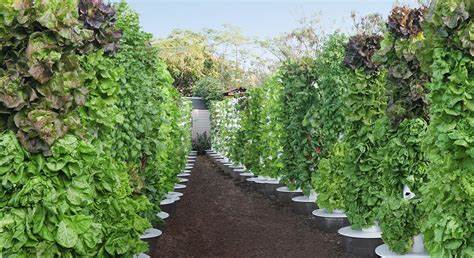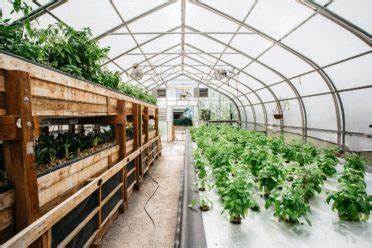
Introduction
Vertical Farming and Community Gardens have emerged as innovative practices that offer numerous benefits in terms of sustainable food production and community engagement. These practices have gained significant attention due to their potential to address food insecurity, reduce environmental impact, and enhance social cohesion.
Historical Background
Vertical Farming traces its roots back to the early 20th century when the concept of growing plants indoors using artificial light was introduced. However, it wasn’t until the late 20th century that the idea gained traction with advancements in technology and the need for sustainable farming practices. Community Gardens have a long history dating back to ancient civilizations such as the Egyptians and the Romans. In urban areas, Community Gardens gained popularity during World War I and II, where they served as a means to boost food production during times of scarcity.
Key Concepts and Definitions
Vertical Farming encompasses various components, including hydroponics and aeroponics. Hydroponics involves growing plants in nutrient-rich water without soil, while aeroponics is a method of growing plants in an air or mist environment. Community Gardens, on the other hand, refer to shared spaces where individuals or groups cultivate plants, fostering local food production and community involvement.
Benefits of Vertical Farming and Community Gardens
Vertical Farming offers numerous advantages, including increased crop yield, reduced water usage, and year-round production. By utilizing vertical space efficiently, Vertical Farms can produce significantly higher crop yields compared to traditional farms. Additionally, the controlled environment in Vertical Farms allows for precise control over water usage, minimizing wastage. Furthermore, the ability to grow crops year-round in Vertical Farms helps address seasonality issues and ensures a consistent supply of fresh produce throughout the year.
Community Gardens play a vital role in fostering social cohesion and promoting healthy lifestyles. By bringing individuals together in a shared gardening space, Community Gardens provide opportunities for community interaction, skill-sharing, and the development of a sense of belonging. Moreover, these gardens contribute to environmental sustainability by reducing food miles and enhancing biodiversity.

Integration of Vertical Farming and Community Gardens
The integration of Vertical Farming and Community Gardens presents a unique opportunity to maximize the benefits of both practices. Vertical Community Gardens combine the vertical cultivation techniques of Vertical Farms with the community engagement aspects of Community Gardens. These integrated spaces not only provide fresh and locally grown produce but also offer a platform for education, skill-building, and community empowerment. By combining the advantages of vertical cultivation and community involvement, these gardens contribute to urban sustainability and resilience.
Case Studies or Examples
Real-world examples of successful Vertical Farms and Community Gardens demonstrate the potential impact and positive outcomes of these practices. AeroFarms, based in New Jersey, is a leading Vertical Farm that utilizes aeroponic technology to grow leafy greens and herbs in a highly efficient manner. In terms of Community Gardens, the Camden Children’s Garden in New Jersey has been successful in engaging the local community through gardening, educational programs, and recreational activities, contributing to community development and empowerment.
Current Trends or Developments
The field of Vertical Farming is witnessing recent trends such as the adoption of automation and artificial intelligence. These technological advancements help optimize resource utilization, improve crop yields, and reduce labor requirements. In the realm of Community Gardens, there is a growing emphasis on integrating technology and innovative design concepts. For example, the use of smart irrigation systems and vertical gardening techniques allows for efficient use of space and resources in urban areas.

Challenges or Controversies
Vertical Farming faces challenges such as high initial costs and energy consumption. The setup and maintenance of Vertical Farms can be expensive, making it inaccessible for small-scale farmers. Moreover, the energy requirement for indoor lighting and climate control systems can contribute to a substantial carbon footprint. Community Gardens, on the other hand, face challenges related to land availability and conflicts with existing urban development plans. The limited availability of suitable land for gardening purposes poses a hurdle in establishing Community Gardens in densely populated areas.
Future Outlook
The future of Vertical Farming and Community Gardens holds promising implications for sustainable food production and fostering community resilience. With advancements in technology and increased awareness of the benefits, Vertical Farming is likely to become more cost-effective and accessible to a wider range of farmers. Similarly, the integration of Community Gardens into urban planning and development policies can ensure the availability of green spaces and promote community well-being. These practices will play a crucial role in addressing global food security and sustainable urban development.

Conclusion
In conclusion, Vertical Farming and Community Gardens have the potential to revolutionize the way we produce food and engage with our communities. By embracing and promoting these practices, we can achieve sustainable food production, address food insecurity, and foster resilient communities.
References
“Vertical Farming: A Sustainable Solution for the Future” – World Economic Forum
“Community Gardens: A Pathway for Social Cohesion and Food Security” – United Nations
“AeroFarms: Transforming Agriculture with Vertical Farming” – AeroFarms website
“Camden Children’s Garden: Cultivating Community Engagement” – Camden Children’s Garden website
“The Future of Vertical Farming: Challenges and Opportunities” – Journal of Agricultural and Food Chemistry




